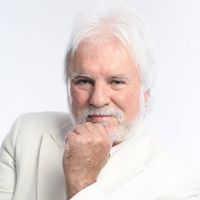Review of Louise Hay’s Book “You Can Heal Your Life”
Louise Hay’s seminal work, You Can Heal Your Life, has been a beacon of hope and guidance for millions around the world since it was first published in 1984. This self-help classic blends elements of psychology, metaphysics, and spirituality, inspiring individuals to embrace positive thinking and take charge of their physical and emotional well-being. In this review, we will explore the core tenets of Hay’s philosophy, the impact of her teachings, and the reasons this book remains relevant even decades after its initial release.
The Premise of Healing Through Thought
At the heart of Hay’s message is the belief in the profound connection between the mind and body. She posits that our thoughts and beliefs shape our experiences and can manifest as physical ailments or emotional turmoil. In You Can Heal Your Life, Hay asserts that to heal ourselves, we must first re-examine our belief systems and assess how they influence our health and overall happiness.
One of the most compelling aspects of the book is the idea that many physical diseases are rooted in emotional issues. For instance, Hay suggests that issues related to the throat may stem from difficulties in communication, while back pain may be linked to feelings of unsupportedness. This connection encourages readers to introspectively consider how their mental state might be contributing to their physical health, challenging them to rethink the conventional separation between mind and body.

Core Concepts and Tools
1. Affirmations:
A cornerstone of Hay’s philosophy is the power of positive affirmations. Throughout the book, she provides readers with numerous statements meant to inspire self-love, confidence, and healing. An affirmation is a simple, positive statement that can be repeated to oneself to begin reshaping one’s beliefs. For example, phrases like “I am worthy of love” or “I release the past and embrace the present” serve as tools for cultivating a healthy self-image and positive mindset.
2. Mirror Work:
A unique practice highlighted in the book is ‘mirror work.’ This involves looking into a mirror and affirming one’s worth and beauty. For many, this exercise can feel uncomfortable, as it forces them to confront self-judgment and insecurities. However, Hay emphasizes that this practice is essential for fostering self-acceptance and love, essential components for healing.
3. Forgiveness:
Hay also addresses the critical role of forgiveness in the healing process. She encourages readers to let go of past grievances and resentments, emphasizing that holding onto anger or pain only harms oneself. By forgiving others—and oneself—individuals can release emotional burdens and open the door to healing and growth.

Structure and Style
The book is organized into two main sections: the first delves into the principles of healing through thought and belief, while the second offers a comprehensive reference guide that connects various physical ailments with potential emotional causes. This structure allows readers to understand Hay’s philosophy thoroughly and apply it practically.
Hay’s writing style is accessible and compassionate, often infused with anecdotes and personal stories. This relatable approach helps demystify the more abstract concepts of metaphysical healing, making them palatable for readers who may be new to the ideas presented.
Impact and Legacy
You Can Heal Your Life has had a lasting influence on the self-help genre and modern spiritual thought. Its teachings have found their way into numerous subsequent works and have been embraced by many thought leaders in wellness, psychology, and spirituality. Louise Hay herself became a prominent figure in the self-help movement, founding Hay House, a successful publishing company that continues to disseminate empowering content.
Many readers credit the book with transforming their lives, enabling them to overcome chronic illnesses, relationship issues, and emotional challenges by applying Hay’s affirmations and belief systems. The book has inspired countless workshops, seminars, and support groups dedicated to the principles she espouses, creating a community of individuals committed to personal growth and healing.
Critiques and Considerations
While You Can Heal Your Life has garnered a vast following, it is not without its critiques. Some skeptics argue that the book oversimplifies complex health issues, implying that merely changing one’s thoughts can cure serious ailments. Critics caution that while positive thinking is essential, it should not replace traditional medical treatments.
Moreover, the emphasis on individual responsibility in healing may inadvertently place undue pressure on those who struggle with chronic conditions or mental health issues, leading to feelings of blame or inadequacy. It is vital for readers to approach the book’s concepts with an open mind while also acknowledging the complexities of health, illness, and personal circumstance.
Conclusion
In conclusion, Louise Hay’s You Can Heal Your Life offers a transformative perspective on the power of the mind in shaping one’s reality. Through affirmations, forgiveness, and the practice of mirror work, readers are encouraged to take charge of their healing journey by addressing their thoughts, beliefs, and emotional patterns.
Despite some criticisms, the book remains a valuable resource for those seeking to foster self-love, acceptance, and holistic healing. Its timeless wisdom continues to resonate, reminding us that the journey toward healing often begins within. For anyone searching for guidance in reclaiming their power, You Can Heal Your Life is undoubtedly a worthy companion on the path to self-discovery and wellness.

Grant Edward Rayner